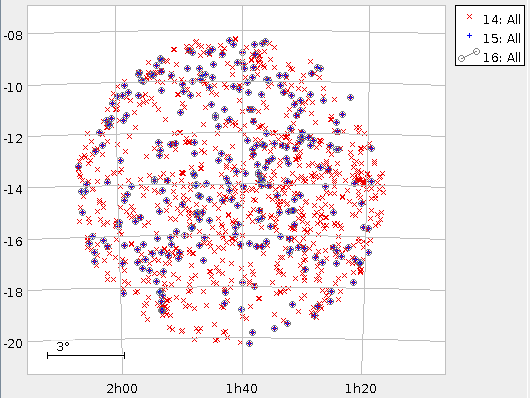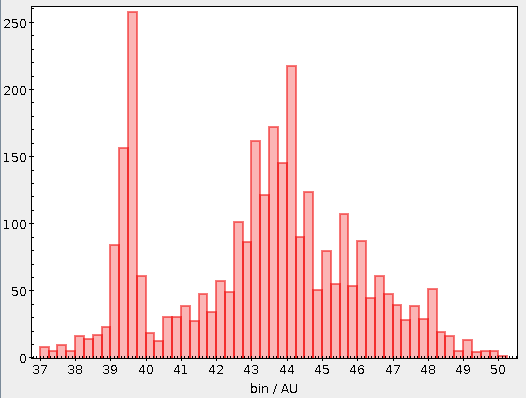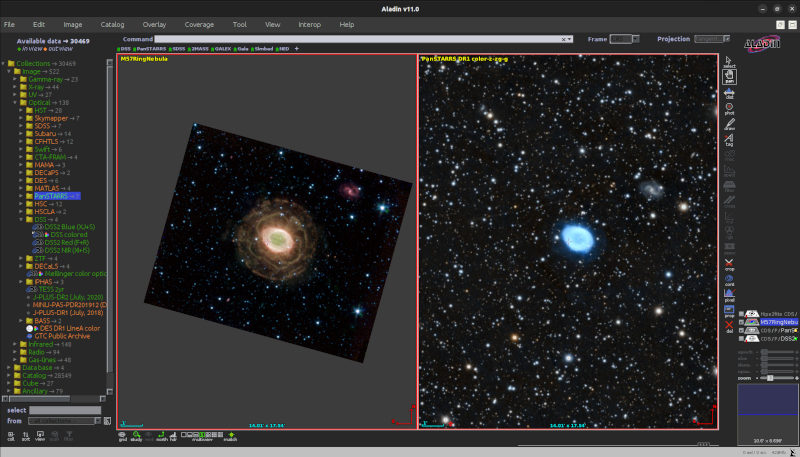Over the years, GAVO has produced a number of VO tutorials, i.e., texts that introduce some technique related to using the Virtual Observatory, preferably within some halfway plausible scenario. In effect, they are software documentation, and as software itself, software documentation suffers from bit rot. To work against that, the tutorials have to be revised occasionally.
My two student assistants Sonja Gabriel and Chuanming Mao have recently done some of that revising. Let me use this opportunity to show off some of these freshly polished tutorials.
A classic one (that has, if I may say so myself, aged rather well), is Adding catalog data to object lists using the VO. This is a thinly disguised introduction to TAP uploads, arguably the most powerful of all the VO tech to date. If you have come to this place without ever having done a TAP upload, you owe it to yourself to at least skim the tutorial and quickly follow along the few steps to do positional crossmatches with just about any astronomical catalog and with just about any level of sophistication.

Another classic – it has its roots in the original Italian VO Days[1] – is TOPCAT and Aladin working together. It is using SDSS data of some galaxy cluster to try and get you to to send around data and positions between different programs using SAMP. If you are reading VO blogs, it is not unlikely this kind of thing will make you yawn. But at VO Days, it's little things like this that usually most immediately appeal to students and researchers alike.

From a tech point of view, Explore the Pleiades with TOPCAT and Aladin also mainly looks at SAMP (perhaps even somewhat less convincingly), but it's such a striking demo of what an amazing instrument Gaia is, and it's a nice introduction to TOPCAT's VO interface and subsetting facility that it's definitely worth a look, in particular as a showcase of having instant results with the VO.

An entirely different topic (well: it also employs SAMP for a moment) is covered by Data Discovery Using the Virtual Observatory Registry. This is trying to motivate looking for data collections in the VO Registry (in the form of our Browser interface to it). This tutorial has grown quite a bit during the review and now includes two sections joining data from different resources for various purposes. One section illustrates how systematics of quasar redshifts might be looked into using different sources, the other investigates the Tully-Fisher relationship in different spectral bands.

The tutorial on Asteroids in the Solar System was entriely overhauled. It was (and still is) mainly intended to be used in schools, and thus it originally just built on things that ran in a web browser. As is typical of things in web browsers, they have long since vanished. Hence, a rather fundamental update was necessary anyway. While we were looking for interesting things to do – the plot above, by the way, is the distribution of major halfaxes in the Kuiper belt –, we ended up even includeding a brief bit on ADQL.
Due to its school focus, we are also offering this particular text in German as well as in English. If you are an Astronomy teacher with particularly motivated pupils , we would like to hear from you…

The last revised tutorial I would like to mention also has a somewhat special (main) target audience: Astrometric Calibration using Aladin. Admittedly, automatic, or “blind” calibration has become really great, and I think getting their images located on the sky is not much of a problem even for amateurs any more, thanks in part to services like astrometry.net. But then – sometimes there is nothing like a good, old manual, ummm, “plate” solution. Aladin and the VO make that lot less tedious than it used to be.
Of course, I cannot have a post on tutorials without mentioning the VO Text Treasures, a web page that shows the educational material currently registered in the VO Registry. This little page also accounts for bit rot: You can sort by the time last inspected there, and thanks to Sonja's and Chuanming's efforts, our tutorials look very good in that representation at the moment.
In case you have some material suitable for WIRR yourself: Please register it, too. Send me a mail and I will lend you a hand (or, if you are a VO pro, directly read the pertinent standard).
| [1] | That's block courses on VO matters lasting a day or two. If you are in Germany, you can book us for your very own one! |

![[RSS]](./theme/image/rss.png)